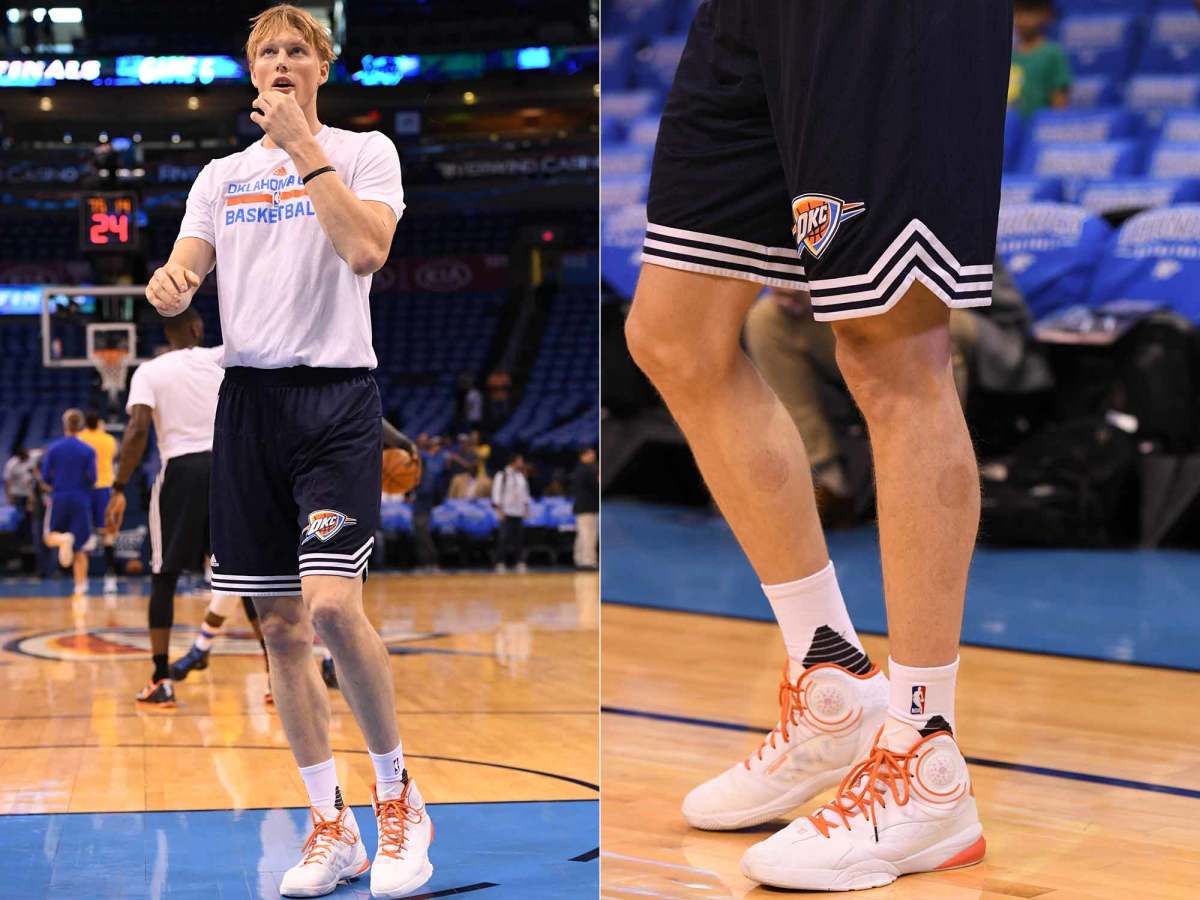From Michael Phelps to the NBA: Cupping bruises are popping up everywhere

The largest of the bruises are the size of a grapefruit, every one a perfect circle and a muted, consistent shade of red-violet. Smaller marks—plum-sized, if we’re maintaining the standardized fruit scale—might dot one’s legs in the same hue and a similar, deliberate pattern. High-level athletes around the world swear by cupping, the process that put them there. Michael Phelps has become an incidental spokesperson. Members of the gold-winning U.S. women’s gymnastics team count among its boosters. The NBA, too, is filled with ardent believers and reluctant entrants into that world.
“The bruises do look more intense than what they actually feel like,” Thunder forward Kyle Singler said. “But the benefit from it is really great.”
In most of its forms, cupping therapy involves creating suction within glass cups applied to the skin. A mound of flesh swells under each cup as it pressurizes. Blood then surges into the area under the cup, which in theory helps to alter the hemodynamics of a specific area. The goal of the practice as it’s used in the NBA is primarily to aid in maintenance and recovery.
“I know that it's alternative medicine,” Singler said. “You're not necessarily getting the immediate response that you might want but over time it does help with recovery and loosening tissue and stuff like that.”
Think of it as heightened, targeted circulation, through which blood flow cycles out potentially inflammatory elements in favor of something new. The cups stay affixed (or, for the daring, are moved around) for some 10 minutes, and once removed leave behind those distinctive welts.
“The process,” Singler said, “is very strange.”
• Bogut, The Boomers and the future: How Australia found a basketball culture
Unusual as it may sound, NBA training staffs have a vested interest in exploring just about any modality that works. More progressive franchises have been using cupping (and acupuncture, a related treatment in both tradition and underlying philosophy) for decades. Others are more recent adopters, in part because players have become increasingly exposed to alternative forms of treatment. Initial skepticism on the part of players often gives way to an interest in exploring all reasonable, legal, non-invasive means of physical maintenance and recovery.

Singler, himself, was just beginning to dabble by season’s end.
“I didn't really know too much about it until like two months ago,” Singler said during the NBA playoffs. “I did a little acupuncture, and after doing about a month of that, I really enjoyed it and I really saw the benefit from it. Our trainers had the cups available, so I tried them one time and really liked them. I'm trying to implement it into my treatment routine.”
By the end of Oklahoma City’s postseason run, Singler took to the cups about once a week. Veteran Nazr Mohammed, then with the Thunder, believed most of his teammates had at least given cupping a try—if only to satisfy their curiosity as competitors. Others, like Singler, are regulars. It’s notable in either case that the practitioners of this form of therapy, one rooted in the meridian system of traditional Chinese medicine, are largely team trainers themselves. There is no personnel better suited to understand the unique demands on an NBA body and modify cupping methods accordingly to minimize potential risks. Some team trainers and therapists are even wary of using cupping at all in cases where a player hasn’t reported specific, concerning symptoms, for fear that the process might trigger unwanted stiffening or swelling.
• Thunder avoid disaster, re-sign Russell Westbrook in franchise-saving move
Mileage varies among team personnel when it comes to the traditional concepts behind cupping. The practices themselves, however, have largely been disconnected from their cultural roots—similar to the way that dry needling practices developed out of acupuncture or popular forms of yoga have been culled from spiritual discipline. You won’t find variants like wet cupping (which involves blood letting) or fire cupping (which uses a flame to create the vacuum inside the cups) in an NBA training room, nor will Russell Westbrook be kept appraised of his qi.
“It's probably as Americanized as possible,” Singler said.
Pragmatism is the gateway. Its accessibility, though, is owed to a gradually increasing dalliance in alternative medicine throughout the league. Arnie Kander, a legendarily open-minded physical therapist, worked with the Pistons for 23 years before joining the Timberwolves last season as the vice president of sports performance. Cupping was a part of his approach for much of that time. What changed are the attitudes of those who run and populate NBA teams.
• LeBron James chasing the ghost from Chicago and basketball immortality
“This is stuff that, years ago, when you do these things you're looked at as a witch doctor,” Kander said. “To see that it's more normalized now, more understood, and more related to—ultimately, it helps the athlete just to have more exposure to what the possibilities are for them to be doing.”
NBA types aren’t just more receptive to new training practices (sleep science, evolving diets, wearable technology) in 2016, but the old ones as well. It has never been easier to seek out a desired method of traditional or alternative treatment—or to learn more about them. The bruises that come along with cupping are often met with initial shock and a standard line of questioning. In a way, they serve as validation: Would someone like Phelps, with his legacy on the line in Rio, really undergo such a thing if he didn't feel it helped?
The literature base around cupping is sparse enough to leave plenty of room for debate concerning its merits, yet the most powerful endorsements for professional athletes don't come from scientists or researchers anyway. There is no more persuasive advocacy than that of a peer succeeding at the highest levels of competition, his back and shoulders lined with bruises.
